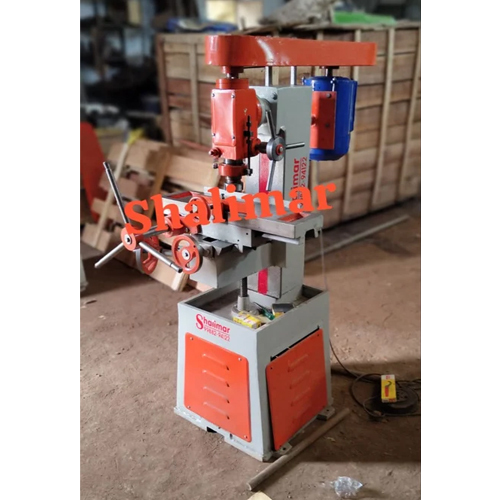Cricket Bat Making: A Master Craftsman's Tradition

Table of Contents
Selecting the Perfect Willow
The journey of cricket bat making begins with the selection of the raw material: willow wood. The quality of the willow directly impacts the performance and longevity of the finished bat.
The Importance of Grade-A Willow
Only the finest Grade-A willow is suitable for crafting premium cricket bats. This specific grade is prized for its exceptional strength, resilience, and density. These characteristics are crucial for withstanding the immense forces generated during powerful shots.
- Specific willow varieties and their properties: English willow, known for its straight grain and shock-absorbing qualities, is highly sought after. Other varieties, like Kashmir willow, also contribute to the market, each offering unique properties influencing bat weight and performance.
- Geographical origins impacting quality: The climate and soil conditions where the willow is grown significantly influence its quality. Specific regions in England are renowned for producing superior willow due to their ideal growing conditions.
- Visual inspection and selection criteria: Experienced bat makers meticulously inspect each piece of willow, looking for clear grain, minimal knots, and consistent density. This visual assessment is critical for choosing only the best pieces for bat production.
The Seasoning Process
Before shaping, the selected willow undergoes a crucial seasoning process. This involves carefully drying the wood to reduce moisture content, typically for several months. Proper seasoning is paramount for preventing warping, cracking, and improving the overall durability of the cricket bat.
- Different seasoning techniques (air drying vs. kiln drying): Traditional air drying is a slower method but generally produces superior results. Kiln drying is faster but requires precise control to prevent damage to the wood.
- Impact of climate and humidity: Humidity levels during the seasoning process significantly impact the wood's final properties. Controlled environments are essential for optimal seasoning.
- Time required for optimal seasoning: The ideal seasoning time varies, but several months, sometimes even years, are needed to achieve optimal dryness and stability.
Shaping the Cricket Bat
Once the willow is properly seasoned, the meticulous process of shaping the bat begins. This involves a combination of precision machinery and skilled hand-carving.
The Initial Shaping and Milling
Large blocks of seasoned willow are initially shaped using specialized woodworking machines like lathes and planers. These machines help create the basic form of the bat, ensuring accuracy and consistency.
- Precision cutting techniques: Sophisticated milling techniques are employed to precisely remove excess wood while maintaining the desired weight and balance.
- Use of lathes and planers: These machines allow for the precise shaping of the bat's profile, handle area, and edges.
- Maintaining the balance and weight distribution: The balance point of the bat is meticulously checked throughout the shaping process to ensure optimal performance.
Hand-Carving and Refinement
After the initial shaping, skilled craftsmen take over, using hand tools to refine the bat's profile. This crucial step involves creating the unique shape, ensuring a comfortable grip and the optimal sweet spot.
- Skill required for hand-carving: Years of experience are required to master the delicate art of hand-carving, creating a balance between strength and lightness.
- Creating the sweet spot: The sweet spot, the area where the ball makes the most powerful connection, is carefully shaped and refined by hand.
- Importance of precise measurements: Every curve and angle is meticulously checked to meet stringent quality standards and the player's specifications.
The Finishing Touches
The final stages of cricket bat making involve adding the handle, applying protective finishes, and adding the final touches.
Applying the Handle and Toe
The cane handle is carefully attached to the bat's blade, usually using a method that provides a secure and comfortable grip. A toe guard is often added for extra protection.
- Different types of cane handles: Different types of cane, varying in thickness and texture, are used to cater to individual player preferences.
- Techniques for handle attachment: The handle is meticulously attached to ensure a firm and durable connection, vital for transferring power from the player’s hands to the ball.
- Importance of grip size and shape: The grip size and shape directly influence the player's comfort and control.
Painting, Oiling, and Finishing
The bat is then painted, oiled, and polished. This protects the wood from moisture damage and enhances its aesthetic appeal. Branding and customization options are also available at this stage.
- Different types of paint and their durability: Durable paints and coatings protect the wood from scratches and abrasions, extending the bat’s lifespan.
- Benefits of oiling and polishing: Oiling and polishing enhance the bat’s appearance and also help to protect the wood against moisture absorption and cracking.
- Branding and customization options: Many manufacturers offer custom painting and branding options allowing for personalized touches.
Conclusion
Cricket bat making is a testament to the enduring power of skilled craftsmanship. From the careful selection of willow to the meticulous finishing touches, each step demands precision, patience, and a deep understanding of the wood's properties. The creation of a high-quality cricket bat is more than just a manufacturing process; it's a time-honored tradition that combines artistry and engineering. To learn more about the intricacies of cricket bat making and discover the perfect bat for your game, explore our resources and contact our expert craftspeople today!

Featured Posts
-
 Siren Julianne Moore Meghann Fahy And Milly Alcock Shine In New Thriller
May 23, 2025
Siren Julianne Moore Meghann Fahy And Milly Alcock Shine In New Thriller
May 23, 2025 -
 Crafting Compelling Briefs Strategies For Success In Business And Beyond
May 23, 2025
Crafting Compelling Briefs Strategies For Success In Business And Beyond
May 23, 2025 -
 Netflixs New Dark Comedy Kevin Bacon And Julianne Moore Lead The Cast
May 23, 2025
Netflixs New Dark Comedy Kevin Bacon And Julianne Moore Lead The Cast
May 23, 2025 -
 Review Of The Karate Kid Part Ii Legacy And Cultural Impact
May 23, 2025
Review Of The Karate Kid Part Ii Legacy And Cultural Impact
May 23, 2025 -
 Sheinelle Jones Absence From The Today Show What We Know
May 23, 2025
Sheinelle Jones Absence From The Today Show What We Know
May 23, 2025
